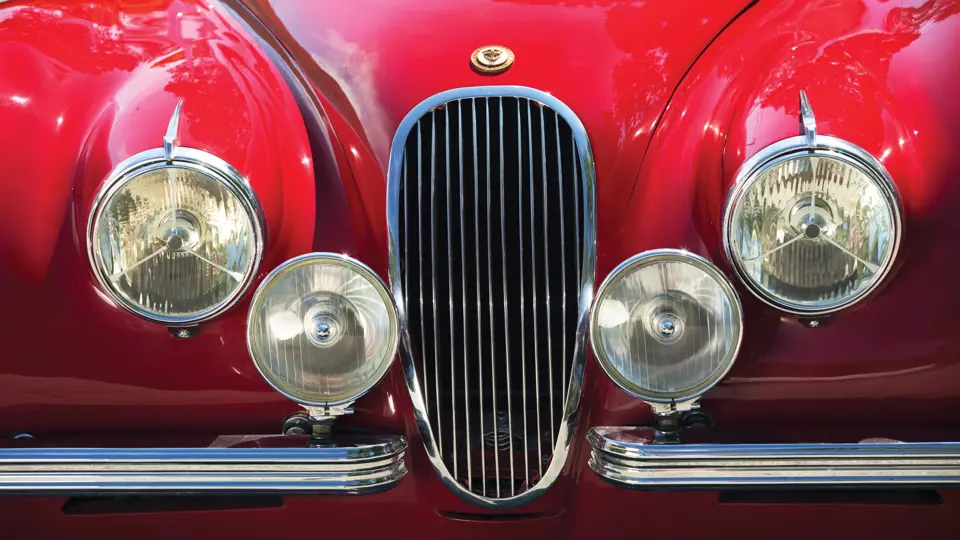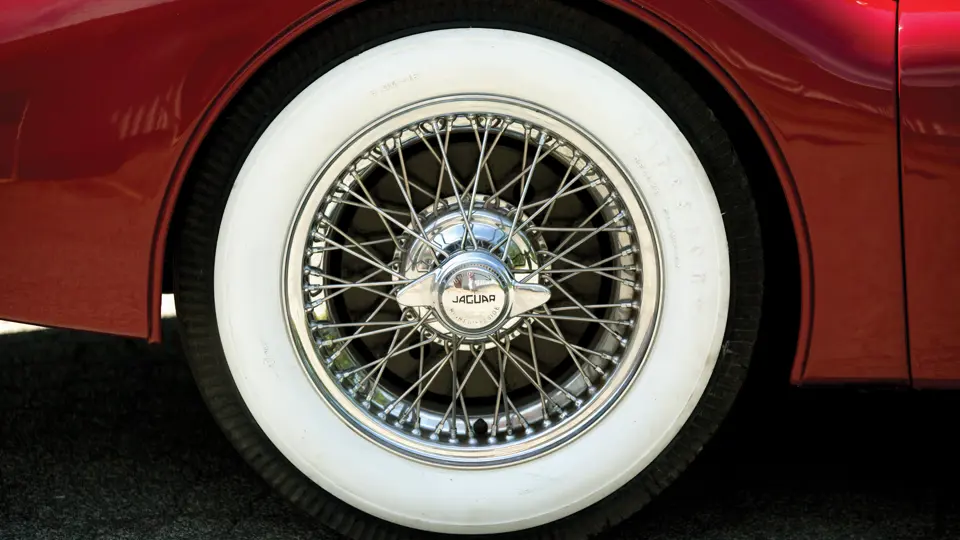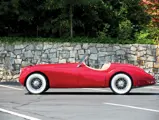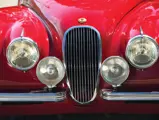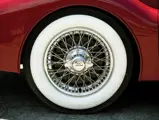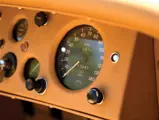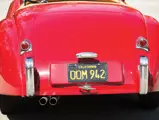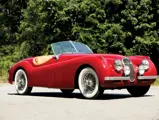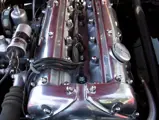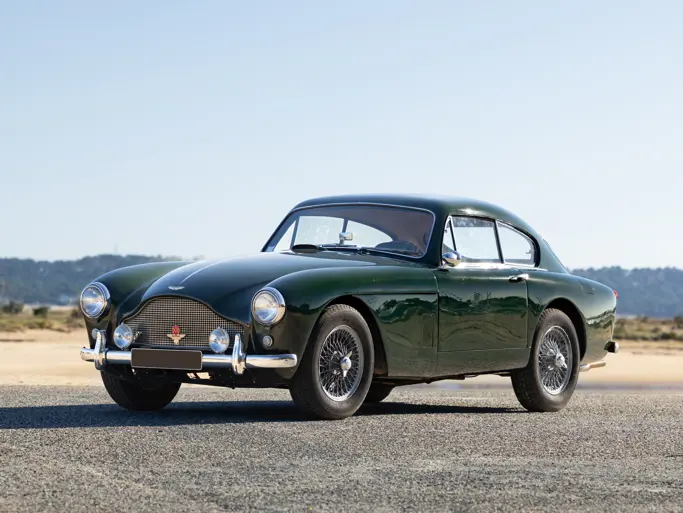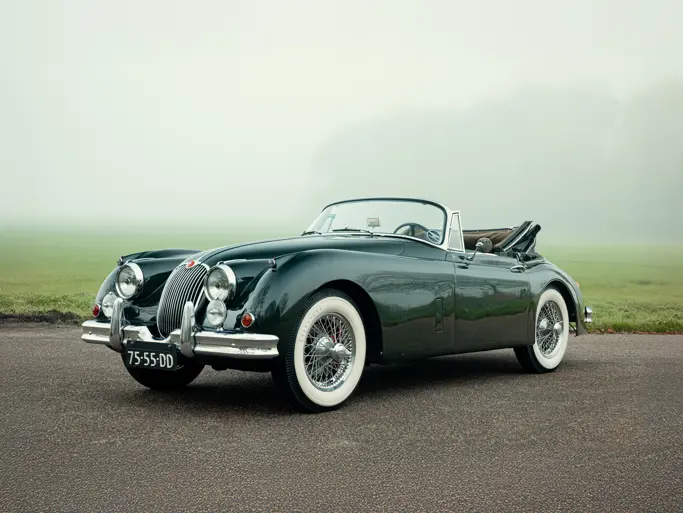160 hp, 3,442 cc DOHC inline six-cylinder engine, four-speed manual transmission, independent wishbone front suspension with torsion bars and an anti-roll bar, live rear axle with semi-elliptic springs, and Girling drum brakes with servo. Wheelbase: 102 in.
During the war years, Jaguar’s Coventry factory turned out trailers and aircraft components, while Sir William Lyons and his engineering staff continued to work on a new post-war engine. When peace returned, the designs were built and tested. After testing more than a half dozen configurations, the modern XK powerplant evolved. Features on this powerplant included chain-driven twin overhead camshafts and a hefty crankshaft that carried seven oversize main bearings. The six-cylinder engine boasted an aluminum head and pistons, along with steel connecting rods, and output of this first motor was a healthy 160 horsepower at 5,200 rpm. The motor debuted in a slightly changed Mark V of pre-war design, which helped generate cash flow while the new design for a new automobile was being finalized.
The XK120 was originally nothing more than a holding place for the new engine. Just 200 examples were to have been built, as the aluminum-bodied roadster was conceived as a low-volume sports car rather than a serious production vehicle. However, when the XK120 made its debut at the Earls Court Motor Show in 1948, it created nothing short of a sensation in the automotive world. The Jaguar offered a rare combination of astonishing speed, race car handling, and the pleasure of driving a beautiful machine…all at a price of around $4,000, which was substantially less than other cars that couldn’t claim half its attributes. A total of 12,055 XK120 roadsters, coupes, and drophead coupes were produced from 1948 to 1954, including 7,374 steel-bodied roadsters. This car was trend-setting more than 60 years ago, and it remains a milestone vehicle today.
This lovely XK120 is finished in Carmine Red with a contrasting biscuit Connolly leather interior, proper Wilton wool carpeting, and a faun cabriolet roof, and it is being offered after many years in a private collection. Its Jaguar Daimler Heritage Trust Certificate confirms its matching-numbers engine, while its consignor also notes it as having been a JCNA Concours Best in Class winner. It comes equipped with side curtains and is fitted with the correct 54-spoke chrome wire wheels on period wide whitewall tires, fog lamps, and unique tri-bar headlamps. The instrumentation is original to the car, and all the gauges are rebuilt and in working order. Inside the boot you’ll find a jack, proper weather equipment, and the tool roll.
The owner proudly notes that the engine compartment, boot, and underside (including the hidden leather gaiters enclosing the rear springs) have been cosmetically restored to show standards. There has been a recent service to the brakes (new master cylinder, wheel cylinders, brake shoes, and hoses), all the cooling hoses have been replaced, the original SU carburetors were rebuilt, and all of the fluid systems were cleaned, pressure-checked, and road-tested. The owner states that this Jaguar offers an outstanding driving experience and is ready to either show or tour.


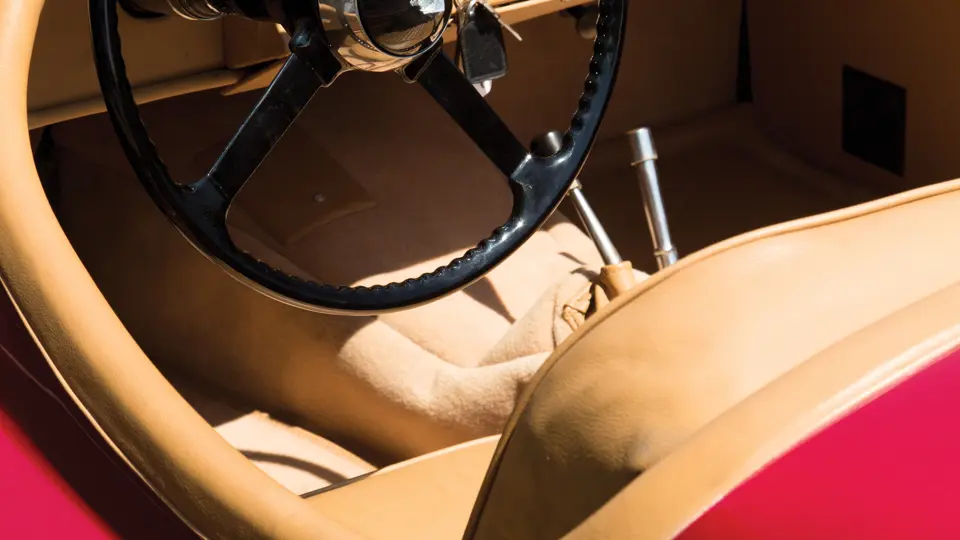

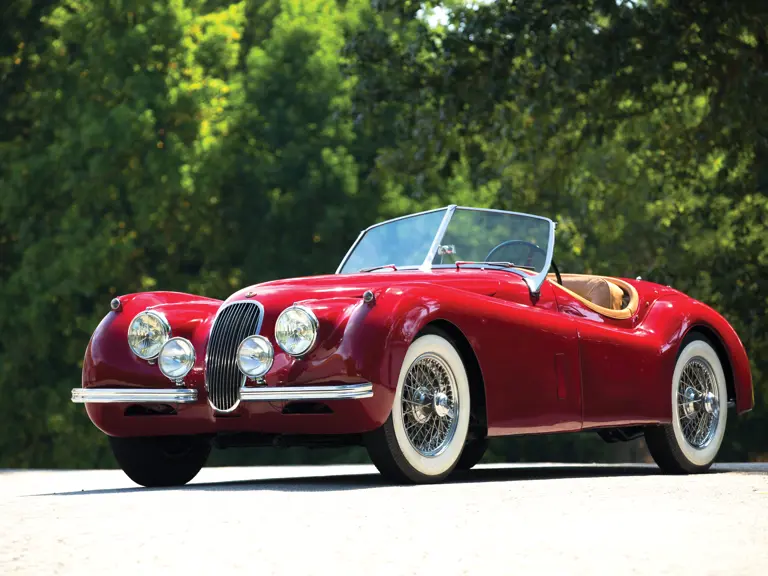
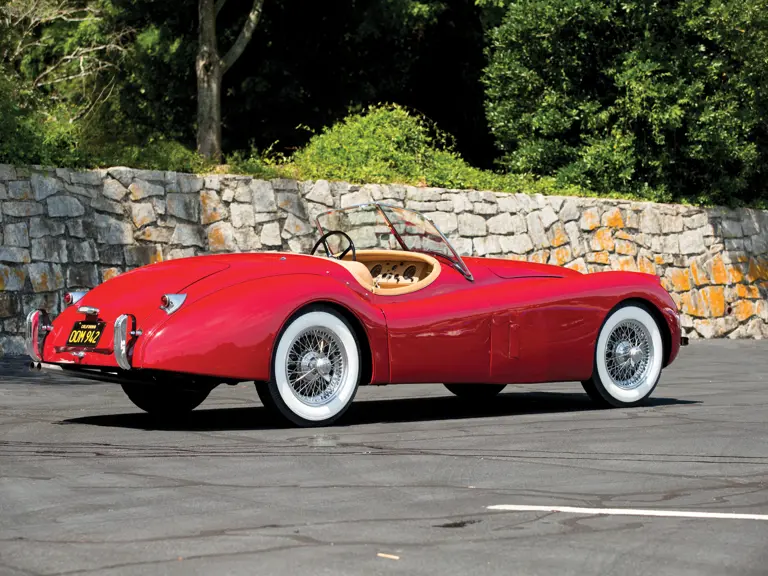
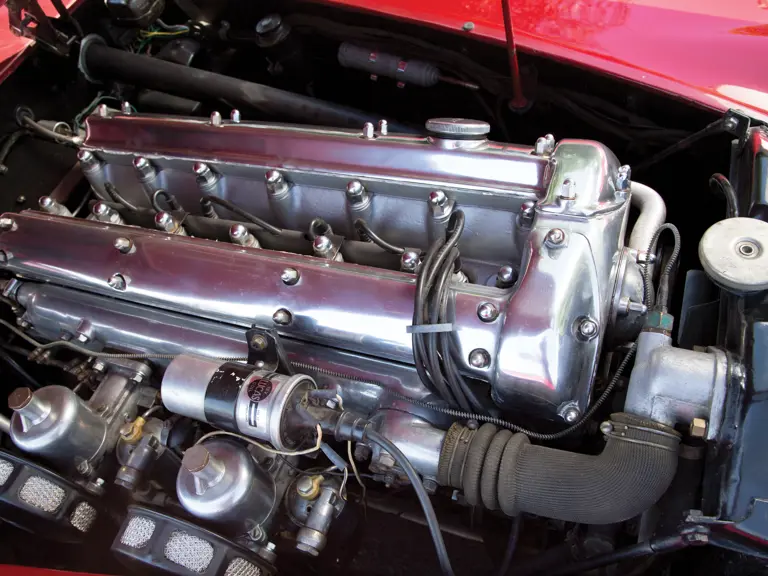
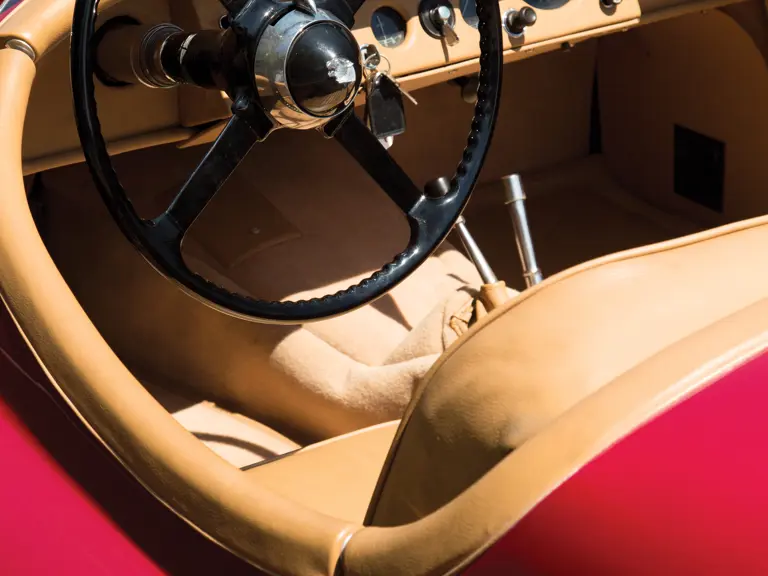

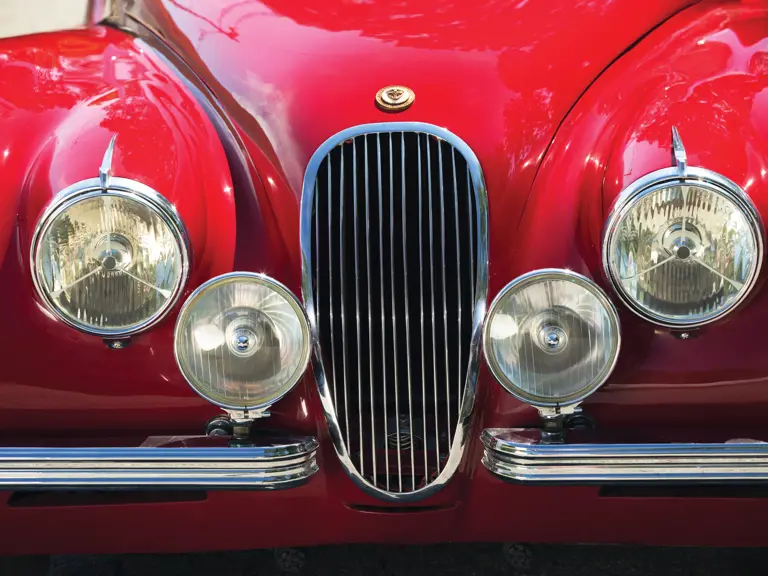

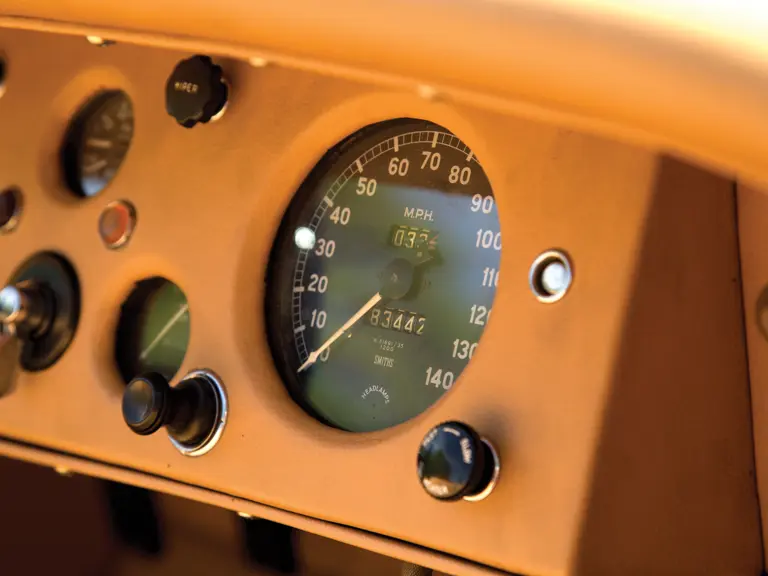


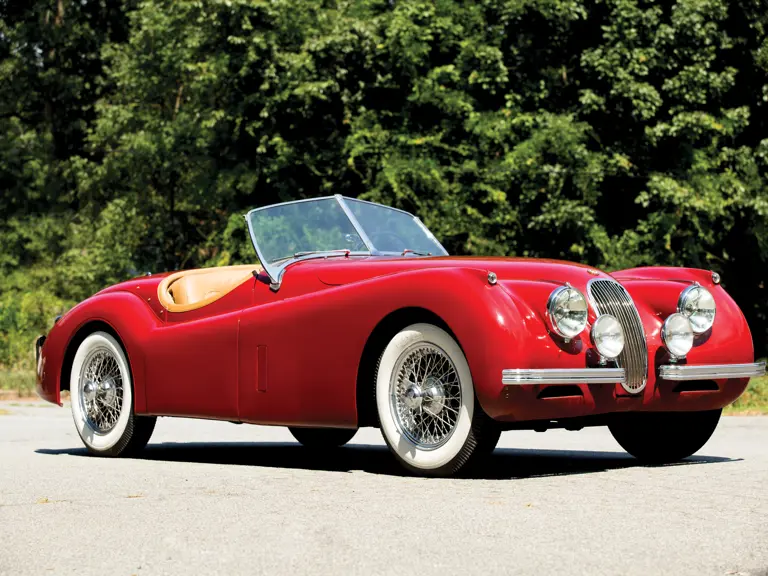
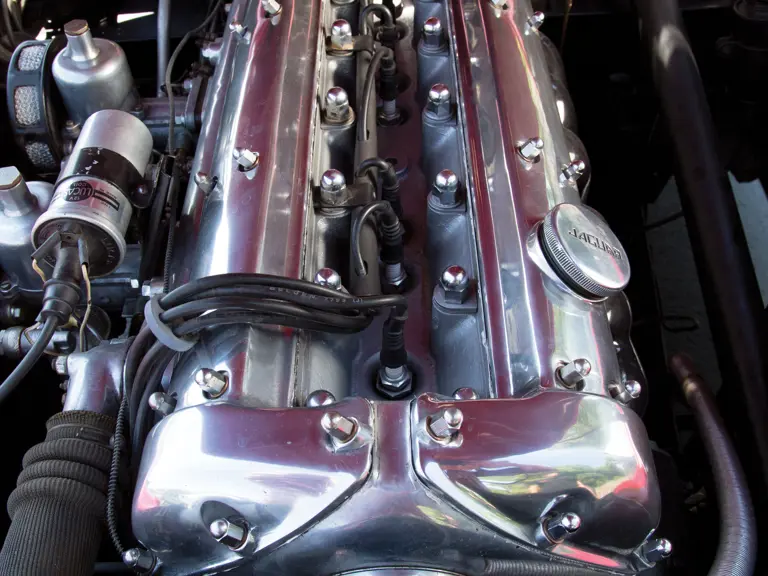

 | Hershey, Pennsylvania
| Hershey, Pennsylvania

